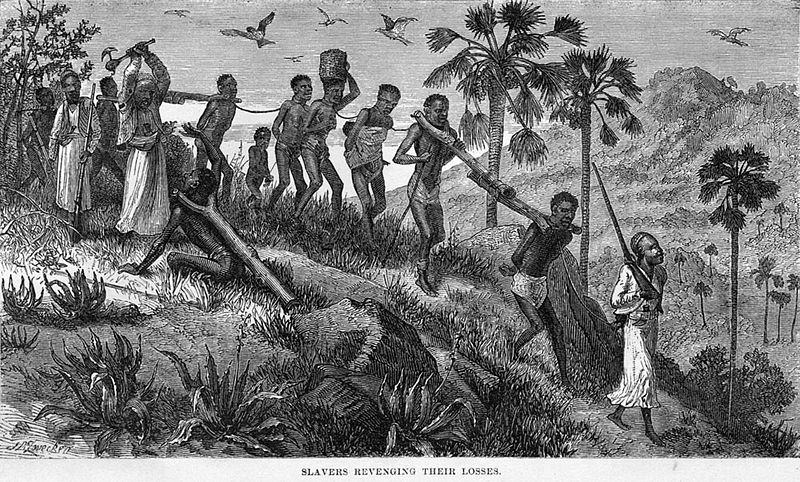Datei:Slaves ruvuma.jpg

Grate faan detdiar föörskaubil: 800 × 482 pixel. Ööder apliasangen: 320 × 193 pixel | 640 × 385 pixel | 1.000 × 602 pixel.
Originaal datei (1.000 × 602 pixels, dateigrate: 286 KB, MIME-typ: image/jpeg)
Datei wersioonen
Klike üüb en tidjponkt, am detdiar wersion uuntulukin.
| Dootem/Tidj | Föörskaubil | Miaten | Brüker | Komentaar | |
|---|---|---|---|---|---|
| aktuel | 04:36, 6. Apr. 2013 |  | 1.000 × 602 (286 KB) | Underlying lk | larger file |
| 18:36, 14. Mar. 2007 |  | 329 × 178 (23 KB) | Béka~commonswiki | {{Information |Description=Arab slave traders and their captives along the Ruvuma (Rovuma) river (in today's Tanzania and Mozambique) |Source=http://www.frontline.org.za/news/making_disciples_nations.htm; also in various non-Internet publications |Date=18 |
Hü det datei brükt woort
Detdiar sidj brükt detdiar datei:
Globaal brük faan datein
Jodiar ööder Wikis brük detdiar datei:
- Brük üüb af.wikipedia.org
- Brük üüb ar.wikipedia.org
- Brük üüb arz.wikipedia.org
- Brük üüb ast.wikipedia.org
- Brük üüb azb.wikipedia.org
- Brük üüb be.wikipedia.org
- Brük üüb bn.wikipedia.org
- Brük üüb bs.wikipedia.org
- Brük üüb ca.wikipedia.org
- Brük üüb cs.wikipedia.org
- Brük üüb de.wikipedia.org
- Brük üüb diq.wikipedia.org
- Brük üüb el.wikipedia.org
- Brük üüb en.wikipedia.org
- Mozambique
- Slavery
- Death march
- Economic history of Africa
- History of slavery
- Slavery in Africa
- Thomas Jefferson and slavery
- 19th century
- Brussels Anti-Slavery Conference 1889–90
- Portal:Pan-Africanism/Selected history
- Portal:Pan-Africanism/Selected history/4
- Indian Ocean slave trade
- User:Caesarz870/sandbox3
- Medieval and early modern Africa
- Brük üüb es.wikipedia.org
- Brük üüb eu.wikipedia.org
- Brük üüb fi.wikipedia.org
- Brük üüb fr.wikipedia.org
- Brük üüb ga.wikipedia.org
- Brük üüb gd.wikipedia.org
- Brük üüb gl.wikipedia.org
- Brük üüb ha.wikipedia.org
- Brük üüb hy.wikipedia.org
Muar globaal brük faan detdiar datei.